- Administrator
- Albums and Singles
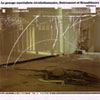 As well as releasing some of the most important and exciting music of the 20th and 21st centuries, Sub Rosa have also acted as archivists when it comes to recordings of important non-musical artists. Previous releases from their aural documents wing include fantastic recordings by Marcel Duchamp, James Joyce, W.S. Burroughs and a series of recordings covering avant garde art in Belgium over the course of the 20th century. This third volume in this Belgian art series covers the main movers and shakers of Belgian contemporary art from just before the Second World War up to the late 1970s. Overall it is a valuable but flawed document that needs more supplemental material to be fully of use to the public and academia at large.
As well as releasing some of the most important and exciting music of the 20th and 21st centuries, Sub Rosa have also acted as archivists when it comes to recordings of important non-musical artists. Previous releases from their aural documents wing include fantastic recordings by Marcel Duchamp, James Joyce, W.S. Burroughs and a series of recordings covering avant garde art in Belgium over the course of the 20th century. This third volume in this Belgian art series covers the main movers and shakers of Belgian contemporary art from just before the Second World War up to the late 1970s. Overall it is a valuable but flawed document that needs more supplemental material to be fully of use to the public and academia at large.
On one hand this CD offers another treasure trove of primary audio documentation of the Belgian avant garde in the mid 20th century but on the other hand it is also a bit of a wasted opportunity. What could have been a brilliant archival document feels like an unfinished project. Granted all the audio here is mostly well preserved (albeit with the odd bit of distortion due to age) but also enlightening. However, for anyone not fluent in French, much of the material will be lost on them. I cannot understand why the usually thorough Sub Rosa did not include a transcription of the interviews and recitations (even as a PDF file on the CD to save on printing a book). I would not consider my French to be awful but I struggled to glean much information from this collection, having translations or even the just the French text available to read while listening would have made things far easier.
That said, the sleeve notes included offer a brief historical and biographical overview of the protagonists. In addition, there is also included a more personal essay on these Belgian artists by Sub Rosa’s own Guy Marc Hinant which is enchanting in its enthusiasm. While I would be familiar with Magritte but not so much with these artists, this sort of passionate introduction to them has definitely piqued my interest in them. Having been exposed to the CoBrA school briefly while on trips around Europe, this is my first real encounter with any of the artists outside of an exhibition. Listening to them speaking, even if mostly incomprehensible, provides a foothold for further exploration of their works. So even if this archive is not a full success in terms of a comprehensive document, it is certainly a success in terms of highlighting these not exactly obscure but often overlooked artists (from a view outside academia).
How useful Le Groupe Surréaliste Révolutionnaire, Dotremont et Broodthaers is to a listener depends on how into art they are. The recordings themselves hold little aesthetic value unlike say James Joyce's readings of his text or Kurt Schwitter's "Ursonate." Without the necessary French skills, even the more playful recordings here are too dry to listen to just for the sake of listening. For the art scholar, these are insightful conversations in the voices of those who were making things happen.
samples:
- Achille Chavée, "3 Aphorismes"
- André Blavier, "Les Fous Littéraires"
- Jean-Pierre Verheggen, "Monsieur Panurge"
Read More
- Administrator
- Albums and Singles
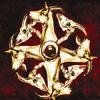 Visual artist Jesse Pep'er, whose hallucinatory artwork adorns the covers of albums by the likes of Edward Ka-spel, Maëror Tri, and Kenji Siratori, finds inspiration in similar territory for his debut album. While not every song evokes the same majestic grotesquerie as his paintings, the best tracks are every bit as otherworldly on this solid, if a bit uneven, album.
Visual artist Jesse Pep'er, whose hallucinatory artwork adorns the covers of albums by the likes of Edward Ka-spel, Maëror Tri, and Kenji Siratori, finds inspiration in similar territory for his debut album. While not every song evokes the same majestic grotesquerie as his paintings, the best tracks are every bit as otherworldly on this solid, if a bit uneven, album.
The album starts a little slow, and the lurid titles make the opening tracks sound more interesting than they actually are. "Carniverous Butterflies" consists of some plodding ring modulations with faint reverb and feedback that never quite develops into anything compelling. "Cemetery Scoundrels" is better, having beats, a light but engaging melody, and the addition of new layers as it progresses, but its main thrust doesn't really change enough. Pep'er's ideas finally start opening up with "Red Parasites of the Black Pig," which is more structurally complex with the addition of beats and sequences even if it goes on a bit longer than necessary. Yet the brief "Undercurrent Dreamspell" is a fairly inconsequential track that uses a slight loop as its foundation over with alternating layers of fuzzy electronics and synth washes.
However, the album gets stronger as it rolls along. "Nightside of Eden" builds suspense with what could be the gasps and sighs of a distant marching goblin army that later erupts in harsh blows. Pep'er uses ghostly moans, digital feedback, and mutilated voices to haunting effect on "Sea Stars Conjuration," while he shows a more playful side with light bass, a jazz-like high hat, and snapping fingers on his nod to Twin Peaks, "Black Lodge Lounge." Both "Bone Oubiette" and "Whispers of the Black Dog" seem to have alien origins, with the former utilizing harsh electronics and reptilian voices while the latter has a stabbing bass loop, electronic hiss, and warped voices.
What lifts Autophagia from its slow start is that it ends with a string of particularly good tracks. "Moon Jellies from Mars" is one of album's most successfully complex tracks with distant beats and wind-up melodies that evolve into a truly captivating experience. Equally good is "Serpent Breath," which uses hypnotic beats but also incorporates manipulated voices coming through layers of radio frequencies and static. The album ends with the galactic melodies of "The Owls Are Not What They Seem" and the distorted beats of the brief but effective "Scarab."
The album would have benefited from a sizable trim of its running time of nearly 77 minutes because it does have a fair share of filler. Even so, the best tracks match Pep'er's visionary artwork, originating in a dream-like realm all his own.
samples:
Read More
- Administrator
- Albums and Singles
 The latest from Poland's Mort Douce is named after a poem by John Siddique. Given the title, I expected to be besieged with insect chittering or else the maddening rush of descending swarms. Instead, the sounds are almost geological, like dropping a microphone into the center of the Earth and amplifying minute tectonic shifts, documenting the secret life of continents.
The latest from Poland's Mort Douce is named after a poem by John Siddique. Given the title, I expected to be besieged with insect chittering or else the maddening rush of descending swarms. Instead, the sounds are almost geological, like dropping a microphone into the center of the Earth and amplifying minute tectonic shifts, documenting the secret life of continents.
What first struck me when listening to this album was how it evokes an epic sense of space. "Dream of Better Days" begins with what could be the industrial clatter of a steel refinery reverberating in vast halls of feedback and suffering a slow death. "Beneath the Flesh" could be a geologic gasp, like a crumbling ice shelf, and "All Stripped Down" evokes larges bodies of colliding minerals. Things get more cosmic with "A Flash Flood in the Night," which evokes the radar blips of a moon landing while debris bounces off of a vessel in low gravity as faint bits of melody are drowned in gaseous swirls. The brief "Sun in My Hand" continues the outer space vibe, as if howling interstellar wind is stressing the metal of an orbiting satellite.
The album's only misstep is "Coarse State of Saturn." It starts with rasping, swirling sounds and deep tones that are soon overwhelmed, if not hijacked outright, by a wearisome high pitch that induces headaches and makes dogs howl. Unfortunately, this annoying high pitch overpowers and obscures most of everything else occurring on the track, which is otherwise dense with activity. Still, it's only one track of six and doesn't spoil the album's stronger material.
Succinct and deliberate, Locust Dreams makes its point without any unnecessary fluff or padding. A definite step forward, it's easily the best thing I've heard yet from Mort Douce.
samples:
Read More
- Matthew Amundsen
- Albums and Singles
"I" begins the album with a vast, cavernous gasp and quiet demonic communication hinting at the abyss, surrounded by the moans of dusty fallen angels. The music burrows into a black hole, slowing time and twisting it mercilessly, gathering momentum in its destruction. The rocky movement of thunderclouds forms much of "II," aided by a slow incantation and the screeching wails of thwarted steel. "III" starts with electric rustling from a high voltage field that's soon overtaken by a carnivorous maw and the yawns of a blind megalithic god awakening from slumbering darkness. Gaseous forms coalesce into sentience in "V" as a patient blacksmith toils in the background. The only track that seems a little out of place if only because its brevity and subdued atmosphere is "IV," which seems to heighten expectations for an arrival or the dawning of something that never happens. Yet this track isn't bad, merely different, and doesn't subtract from the album's enjoyment in the slightest.
Music with such malevolent droning ambience is often easy for musicians to create but fairly difficult to do well, which makes Black Tourmaline one of the rare exceptional works in this crowded field.
Read More
- Matthew Amundsen
- Albums and Singles
Dobson has a great ear for this material and adds new elements in all the right places, such as the light, shimmering effects that presage a heartbeat rhythm on "Gymnothorax Fimbriatus" or the subtle distorted textures fleshing out what would otherwise be standard electronics on "Crossota Norvegica." With "Somniosus Microcephalus," he confirms the deep sea vibe with its languid pace and rich electronic washes. Bass takes on more prominence on "Pachycerianthius Fimbriatus," and the track also has strange amphibian blurts and hints of distortion at the edges. I was less enthralled with the opening track, "Nereis Sandersi," a collaboration with Jason Filippini, because I'm not terribly enthusiastic about glitch music in general, but Dobson's deep piano tones provide an adequate counterbalance.
I can't argue that this album is particularly groundbreaking, but it is so well executed that that's not really a factor. Into the Deep is a thoroughly energizing and immersing album.
Read More
- Administrator
- Albums and Singles
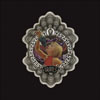 This Portland, Oregon group is probably my current favorite instrumental rock act (basically ever since Battles got all goofy). I've loved all the live shows I've seen and of all their releases on Neurot, Temporary Residence, Important, and Latitude, this, their first release of 2008, is easily my top pick. Here, the group utilize their arsenal of gear and found sounds to showcase their matured compositional skills, exploit some fine riffs, and weave songs together with sounds to make a seamless and blissful 32+ minute record.
This Portland, Oregon group is probably my current favorite instrumental rock act (basically ever since Battles got all goofy). I've loved all the live shows I've seen and of all their releases on Neurot, Temporary Residence, Important, and Latitude, this, their first release of 2008, is easily my top pick. Here, the group utilize their arsenal of gear and found sounds to showcase their matured compositional skills, exploit some fine riffs, and weave songs together with sounds to make a seamless and blissful 32+ minute record.
The group has been perfecting a formula since 2003: heavily influenced by Sun City Girls as well as the classic hard rock and metal forefathers yet open-minded enough to introduce samples, atmospherics, grand anthemic sounds, and non-western scales and themes into the mix. The sound is big, immense, and vast: I'm always discovering new bits and pieces I hadn't noticed before. With Take Refuge in Clean Living they not only have managed to make it all feel natural and flow amazingly well, but they have authored some of their best songs.
I get more of a feeling of Funkadelic's lengthy endeavors (songs like "Maggot Brain," "Free Your Mind,...") than any Black Sabbath tune on "Stoned at the Taj Again," as it opens with morse code, a swirling guitar melody, a wash of noises, and the audio decor of a hammer dulcimer until the drums crash in. It's a wonderful rush. Things mellow out and a sitar-mimicing guitar takes the focus until the pace picks up again before a seguay into "PTSD," a tune using a similar formula of ingredients and adding an analog synth. Here they keep the pace far more subdued, yet it's still just as sexy, with the calm of crickets leading into their creepy harpsichord-accented graveyard-esque cover of the Ventures' "11th Hour."
"Take Refuge" is a moderately-paced jam with a harpsichord drone providing the foundation for a wonderful guitar play of two guitars taking the lead while the drummer makes his presence clearly known. Focus shifts to an organ providing the drone for the second half of the tune, and while the guitars and drums back off to clear the path for it, the song never loses a beat, coming back in full force with horns, vibes, and a bass line that takes charge. "Clean Living" closes the disc out gracefully using a pretty piano melody, colored by strings, distortion, and grand echoes, making the most delicate melody on the album sound just as huge as the heavy riffage from earlier on.
It's too easy to talk about a formula; critically, however, it's difficult to describe how a song makes an impression, aesthetically. All of the music here is challenging yet captivating, skilled yet sexy, dense and rich, and while the songs are lengthy, it all goes by too quickly.
samples:
Read More
- Administrator
- Albums and Singles
 While Grails' second release of the year isn't a mis-step, I simply don't find that I'm captivated by the melodies contained herein. For the second time this year the group have produced a 30+ minute long collection of pieces of epic magnitude, however, I'm often left waiting for songs to develop, and then let down as some of these pieces seem like incomplete thoughts when compared to the previous release.
While Grails' second release of the year isn't a mis-step, I simply don't find that I'm captivated by the melodies contained herein. For the second time this year the group have produced a 30+ minute long collection of pieces of epic magnitude, however, I'm often left waiting for songs to develop, and then let down as some of these pieces seem like incomplete thoughts when compared to the previous release.
Grails once again open and close songs with sound effects. "Doomsdayer's Holiday" launches the disc with banshee like screams in the distance and a rumble before the bombastic drums blast in. Twin guitars riff like an '80s metal record but the tune doesn't go far and dies a rather quick death, fading out sharply before developing into anything substantial. It sets the tone for the release as there's a lot of other 3-5 minute pieces on the disc which don't seem to end naturally. Even with the eastern samples of "Reincarnation Blues," the bombast seems much more westernized and the tune is unexcitingly rather monotone.
The pace remains constantly slow for the most part without the exciting peaks they're quite capable of achieving. It almost sounds lazy how they choose to spend time more in freakout parts in a song like "Immediate Mate" and quiet lulls in "X-Contaminations" than consciously work on a memorable driving melody. Other tunes like "The Natural Man" and "Acid Rain" would seem great on paper—incorporating a wide array of instruments like flute, vibes, piano, and dulcimer on the former and vocals and analog synths on the latter—but once again the melodic structure seems to be meandering and unchallenging. The latter, the album's closer, is a bit too '70s adult contemporary "safe territory" for my tastes, and is probably what leaves me with such a funny taste in my mouth when the record is over.
Any other group might have created a full album of 12 pieces, totalling just over 60 minutes, but Grails chose to give this 37+ minute long release to Temporary Residence, and, in turn, preserve the purity of Take Refuge in Clean Living. I'm thankful for that as while I can respect Doomsdayer's Holiday and know that somewhere some kids are getting completely baked and listening, I'll keep going back to Take Refuge.
samples:
Read More
- Administrator
- Albums and Singles
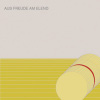 After having explored the experimental possibilities inherent in the grand piano on his 1986 album Notturno, Tietchens visited the human voice on the 1988 follow up Aus Freude Am Elend. On it, this musical innovator raids recordings of religious ecstatics, people shouting and making love, people singing, and others, using these ‘stolen’ voices to create new frameworks, decontextualised and deconstructed, and in the process rendering the human voice as richly complex an instrument as any woodwind or stringed example. Under Tietchens' analytical gaze and craftsmanlike manipulation, we are left with something that is at once familiar and exotically alien, a veritable menagerie of species paraded before the gaze and designed to both appal and enthral equally.
After having explored the experimental possibilities inherent in the grand piano on his 1986 album Notturno, Tietchens visited the human voice on the 1988 follow up Aus Freude Am Elend. On it, this musical innovator raids recordings of religious ecstatics, people shouting and making love, people singing, and others, using these ‘stolen’ voices to create new frameworks, decontextualised and deconstructed, and in the process rendering the human voice as richly complex an instrument as any woodwind or stringed example. Under Tietchens' analytical gaze and craftsmanlike manipulation, we are left with something that is at once familiar and exotically alien, a veritable menagerie of species paraded before the gaze and designed to both appal and enthral equally.
The practice and techniques of plunderphonics were nothing new, even back then in the late '80a. The genre had been around since early in the same decade, but never one to sit back and regurgitate what had gone before, Tietchens’ mission was (and still is) constantly to challenge ideas about what music is and could be, even new ones. Consequently (and make no mistake about this), this is one of the most challenging and difficult works so far released in the Die Stadt reissue series of his works. Unlike previous albums, there is very little in the way of recognizable music; instead it’s all created using loops alongside both treated and untreated voices. At one and the same time, there’s a mixture of the warm and natural along with the cold and clinical, as well as a sense that the music is both pleasantly inviting and yet simultaneously repellent.
Surprisingly for what some would see as fairly sterile and intellectual music, perhaps, these tracks elicit quite a broad range of reactions. “Den Stiftsherren,” for starters, is formed from a piece of choral singing but here it’s been imbued with a disturbing air of soiled holiness, the slightly atonal configuration of the singing often jarring and more than disconcerting. It is as if the constant warring of good and evil is fighting for the very soul of the piece. A more ritualistic and decidedly tribally pagan piece cheekily follows on from that in “Negus,” a driving rhythm propelling wordless shouts and grunts, lending it a somewhat purer spiritual primitivism to it that is positively uplifting. To my mind, the juxtaposition of these two tracks hardly seems coincidental, as it seems the philosophical contrast between them is deliberately being pointed up—on the one hand corrupted sanctity and on the other unspoilt spirituality.
As a further example, the track called “Rosenkranz” follows a similar tack, the difference here I felt being that the argument was more to do with ‘primitive’ vs. ‘modern.’ Unaccompanied childlike singing voices, signalling the untouched world, eventually get tainted by the sphere of modern technology, as the piece alternates between untreated and treated voices. Those pure unpolluted tones turn into nasty, clanky, mechanically buzzing electronic insects, a sure metaphor for the slow degradation of so-called ‘primitive’ societies that technology inevitably brings along in its wake.
This, for me, is the soul of the album, the dichotomies and tensions thrown up by the natural versus the modern, and maybe by extension the clash of civilisations and peoples. As never before at any time in history, such tensions and divisions are boiling to the surface. Indeed, as I was listening to this, a whole raft of ideas occurred to me as to what meaning it all held. The plain truth is probably that it has no meaning other than what people bring to it, but it certainly sparked off ideas of opposition, the tension between systems, whether technological, social, or political. The very nature of the material being used and its treatment suggests those frictions and contradictions inherent in every aspect of life and society. The very fact that this album was created two decades ago emphasises its timelessness in that respect. Out of all the albums recorded by Tietchens that I have heard, this has probably been the most rewarding, both intellectually and musically. Apart from any other consideration, it just goes to show how innovative and forward-thinking this artist was, and continues to be even today.
Samples:
Read More
- Administrator
- Albums and Singles
 I really do hope that this officially sanctioned seven-inch remix is the start of an avalanche of Jandek reworkings. This inspired idea of placing someone (so wrongly) regarded as unlistenable in a more acceptable modern context is genius.
I really do hope that this officially sanctioned seven-inch remix is the start of an avalanche of Jandek reworkings. This inspired idea of placing someone (so wrongly) regarded as unlistenable in a more acceptable modern context is genius.
This idea would have been utterly preposterous even a couple of years ago. Putting his sometime unstructured playing and compelling, but disorientating, lyrics into diverse backings could be yet another rebirth for the man. Taking a fairly conventional (for Jandek) track from his Blue Corpse album, both sides of this seven inch are in the running for 2006’s best remix.
By taking Jandek out from behind his drawn curtains and giving him a comfortably low slung, but up-tempo, backing the Secret Frequency remix becomes a perfect rethink. Secret Frequency Crew stitch brief snatches of vocal and guitar together into something plugging the gaps between sixties psychedelia, funk and post hip-hop rock. Sounding nothing like the original cut, but still retaining the sound of Jandek’s world, this is almost guaranteed a re-release beyond this limited run.
Pheonecia’s mix has even less Jandek input than its flipside, using the original’s sounds as a sampling source rather than a base for structure. A backing track of vocal moans and whispering winds has glimpses of an oriental melody, this squashed and spread sound glides over a digital beat. Whether these amazing reinterpretations are just beginners luck remains to be seen, but there is definitely scope for further investigation.
samples:
 
Read More
- Administrator
- Albums and Singles
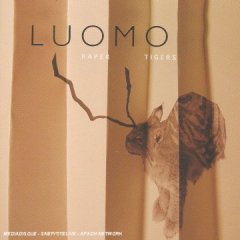 When judged alongside both the artist's masterful debut and its formidable successor, this self-released album tragically underwhelms at just about every percievable opportunity.
When judged alongside both the artist's masterful debut and its formidable successor, this self-released album tragically underwhelms at just about every percievable opportunity.samples:
Read More
- Administrator
- Albums and Singles
 Jason Molina will never be accused of holding back. Through the years as Songs: Ohia and The Magnolia Electric Co, he has proven himself over and over again to be both a prolific songwriter and tireless performer, churning out a stream of excellent albums and perpetually on the road for what seems like 13 months of the year.
Jason Molina will never be accused of holding back. Through the years as Songs: Ohia and The Magnolia Electric Co, he has proven himself over and over again to be both a prolific songwriter and tireless performer, churning out a stream of excellent albums and perpetually on the road for what seems like 13 months of the year.Secretly Canadian
Hard to Love a Man is the third release for The Magnolia Electric Co this year. The title track is in my tops for the year's songs, pulled from What Comes After the Blues, one of my tops for this year's albums. Its mystery is both in the chilling lyrics and matching instrumentation: "It was hard to love a man like you" is open to interpretation as it's never explicitly disclosed whether it's a lover, relative, or other, and combined with the eerie pedal steel lead makes it both uncomfortable and gorgeous. Completing the release are four unreleased songs: three originals and the Warren Zevon classic "Werewolves of London," and whether they could have been outtakes or afterthoughts to this year's masterpiece is almost irrelevant, as they're all fantastic recordings that any fan would warmly welcome.
If there's any underlying theme, it's that the heavy emotions, bluesy guitars, and Molina's golden voice are accented by keyboard instruments more prominently than ever: the gorgeous piano opening on "Bowery," the classic organ on "31 Seasons in the Minor Leagues," and the unforgettable piano riff on "Werewolves in London."
I'm used to Molina's songs stretching for long periods of time, so this EP, if anything, comes as a surprise as it's a lot of short pieces. However, the EP a sweet trinket for fans and is spearheaded by a song that's already a classic.
samples:
Read More

